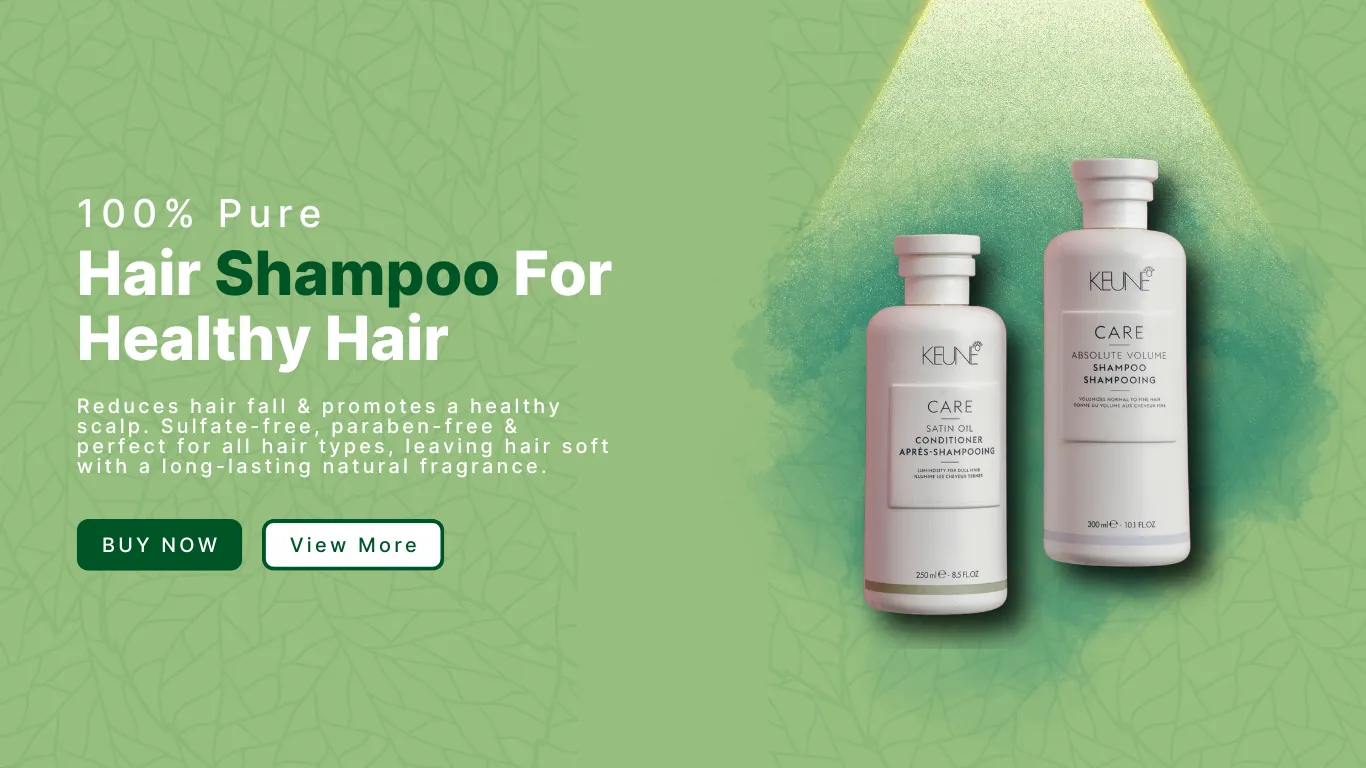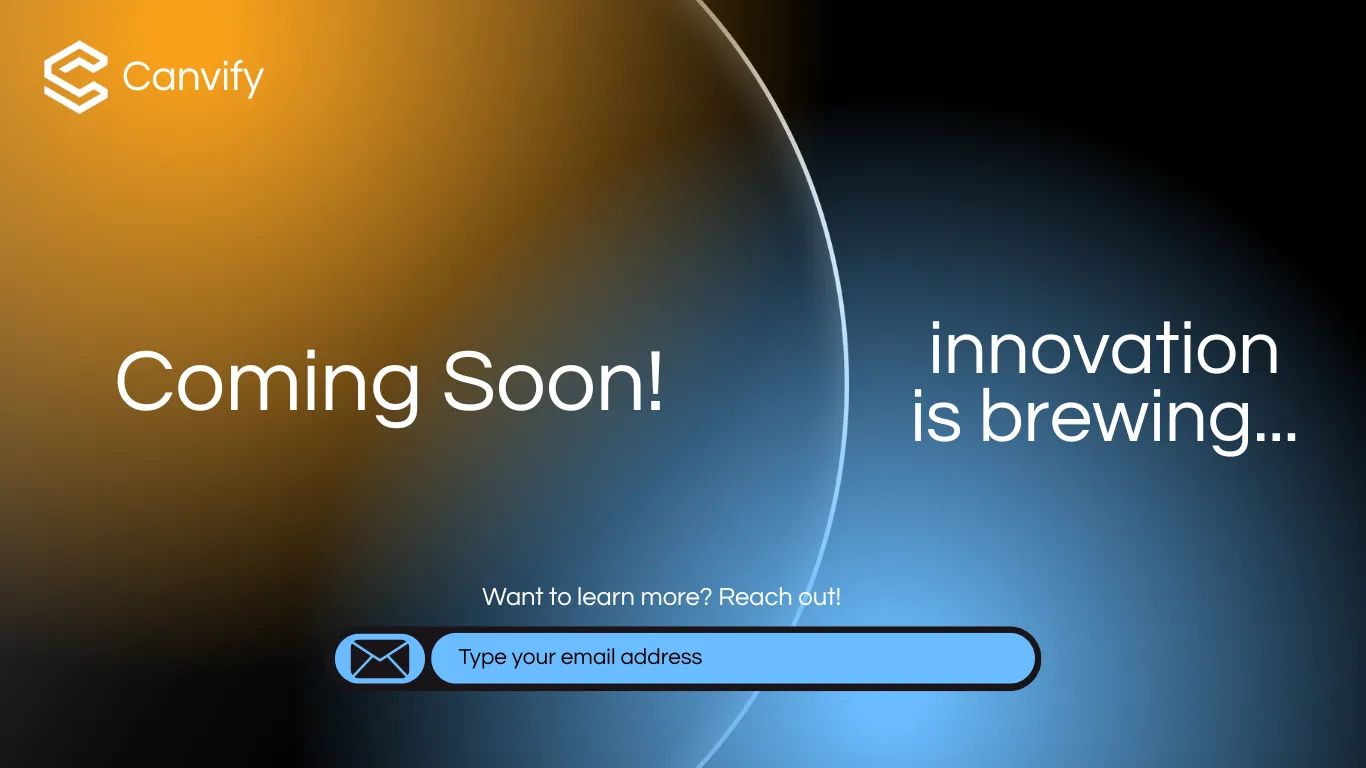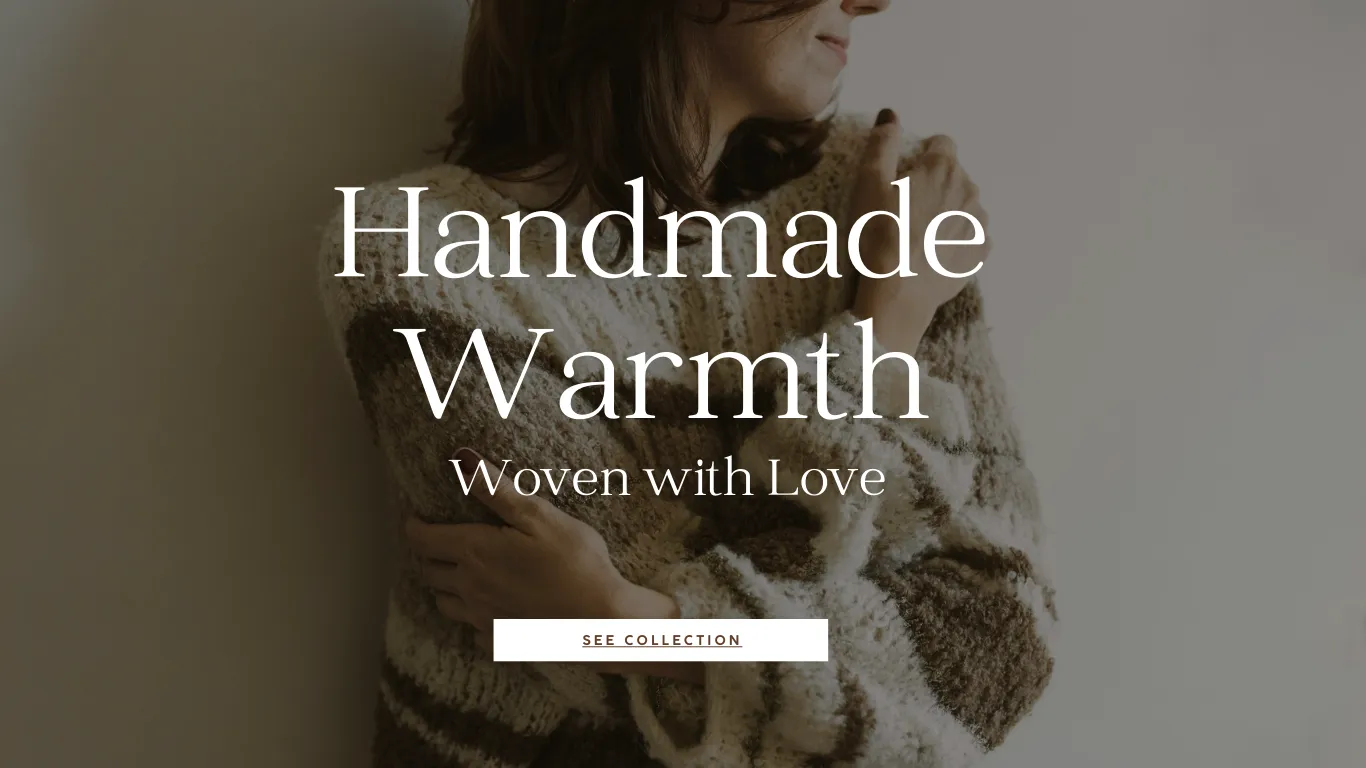5 Popular Ways to Embed Instagram Feed and Posts to Shopify Website & Boost Sales
Instagram isn’t just a social platform anymore. It’s where customers discover new products, follow trends, and make buying decisions. By integrating Instagram into your Shopify store, you can transform social proof into sales.
In this guide, we’ll cover proven ways to showcase Instagram on your Shopify store—from embedding feeds to adding shoppable UGC videos.
Why Showcase Instagram on Shopify?
- Build trust: Social proof from real people using your products.
- Boost engagement: Keep customers connected with your brand’s story.
- Increase conversions: Lifestyle content helps customers visualize themselves using your product.
- Automate content: Fresh posts update automatically without manual uploads.
1. Using Instagram’s Embed Code
One of the simplest methods for embedding your Instagram feed is to use Instagram’s embed code.
How it works: Visit your Instagram profile on a web browser, select the post you want to embed, click on the three dots at the top right corner, and select “Embed.” Copy the embed code and paste it into the HTML of your Shopify page where you want the post to appear.
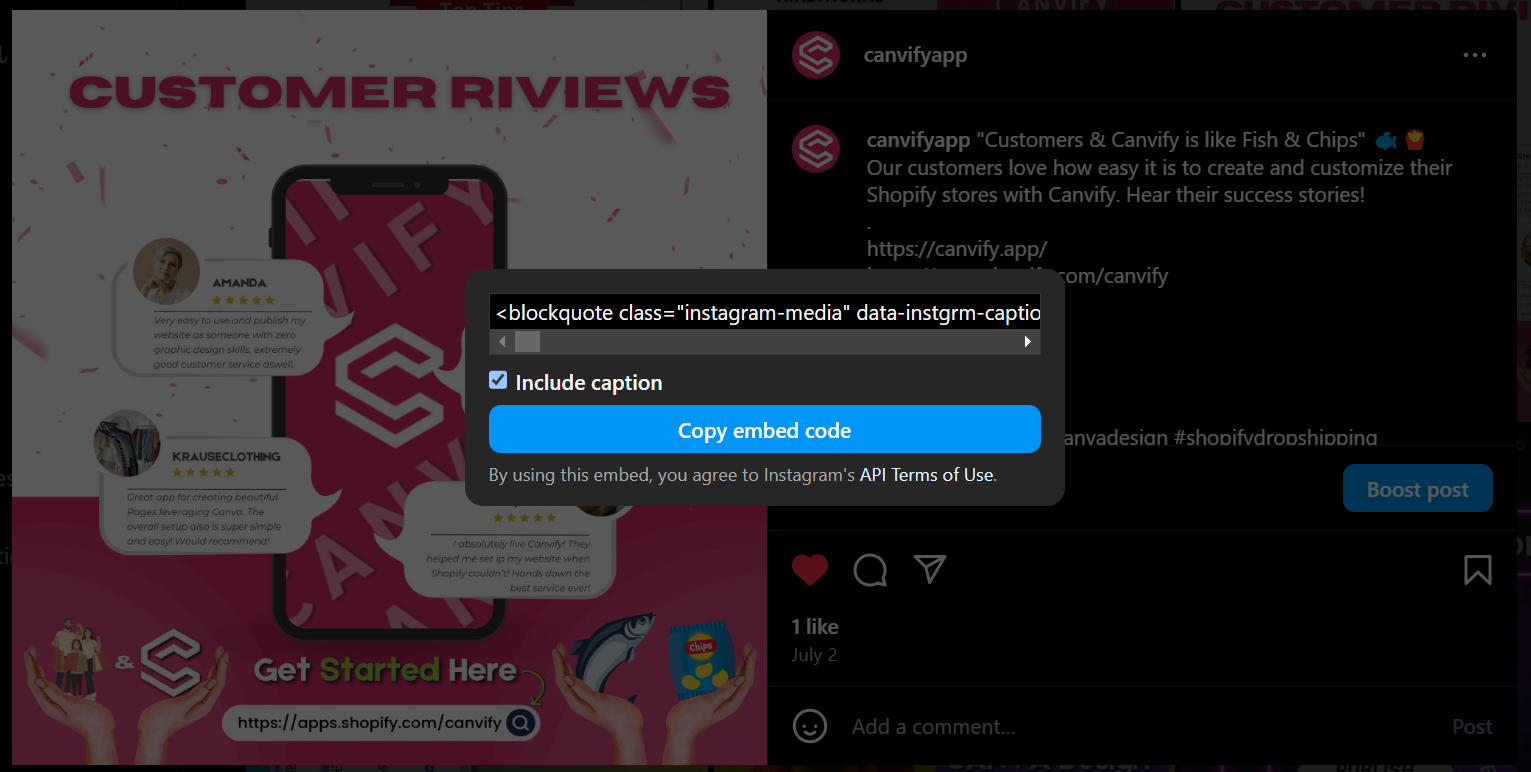
Pros:
- This method doesn’t require any third-party tools or apps.
- You can choose specific posts to showcase on your website.
- It’s free to use and doesn’t require any additional subscriptions.
Cons:
- You need to embed each post individually, which can be time-consuming.
- This method doesn’t provide a continuous feed of your latest posts; it only embeds individual posts.
- Users can’t interact with the post directly on your website, like commenting or viewing more posts without navigating to Instagram.
2. EmbedAny: Turn Links Into Interactive Widgets
EmbedAny is a game-changer for Shopify store owners who want to integrate social media content into their websites without the hefty price tag of multiple apps. This app allows you to embed over 800 types of links from various platforms, including Instagram, TikTok, YouTube, and many more, all for a single, affordable price. Unlike other apps that charge separately for different platforms, EmbedAny consolidates everything you need into one easy-to-use solution. It saves time, reduces costs, and ensures your website stays dynamic by automatically updating your embedded content. Whether you’re showcasing Instagram posts, TikTok videos, or YouTube channels, EmbedAny makes it easy to manage all your social media feeds with just one app.
Pros:
- Cost-effective: Embeds over 800 links for one low price.
- Easy setup: No coding required; simple link pasting. @@ -44,64 +51,60 @@
Learn more about EmbedAny App.
3. Adding Shoppable Instagram Videos to a Shopify Store with the Moast App
Static feeds are great, but interactive video content is even more powerful. That’s where Moast comes in.
Moast is a Shopify app that lets you add shoppable, Instagram-style UGC videos directly to your store. Instead of passively scrolling, customers can click products inside the video and shop instantly.
Why Moast Stands Out
- UGC-first: Highlight real customer reviews and experiences.
- Interactive shopping hotspots: Let customers tap items in the video to view and purchase.
- Seamless Shopify integration: Install from the Shopify App Store.
- Boost conversions: Video content keeps visitors longer and drives more purchases.
How to Use Moast
4. Adding Instagram Feed or Posts to Shopify with Canva Designs
If you want the most design control, you can embed Instagram posts through Canva and then import them to Shopify using the Canvify app. The benefit? You can design a complete website section or a whole page (adding Insta and other media to it) and make your store pop. And then, just seamlessly import it into Shopify using the Canvify app from the Shopify app store.
How it works: In Canva, use the Embed app to add the link of any Instagram post or reel. Design your webpage incorporating the embedded Instagram content. Once done, export the design to Shopify using Canvify.

Read a similar article on how to embed Live TikTok video on Canva design to learn more.
Canvify is a Shopify app that converts your Canva designs into Shopify websites. So, if you are looking to design an amazing page in Canva, you can do so with ease, add your Instagram feed, Facebook feed, TikTok feed, and so much mor,e and transfer it all to Shopify with ease.
Pros:
- You can seamlessly integrate Instagram content within your custom designs.
- You have complete control over the look and feel of the embedded content.
- Canvify makes it easy to transfer your designs from Canva to Shopify without coding.
Cons:
- You’ll need to update the Canva design and re-import it to Shopify whenever you want to change the embedded Instagram content.
- This method only works if you don’t have an existing Shopify website and are looking to launch a new website/store/page with ease of Canva.
5. Using an HTML Widget
You can also use an HTML widget to embed your Instagram feed on your Shopify website. Services like SnapWidget or LightWidget offer this functionality.
How it works: Sign up for a service like SnapWidget, connect your Instagram account, and customize your feed. The service generates an HTML code that you can add to your Shopify page.
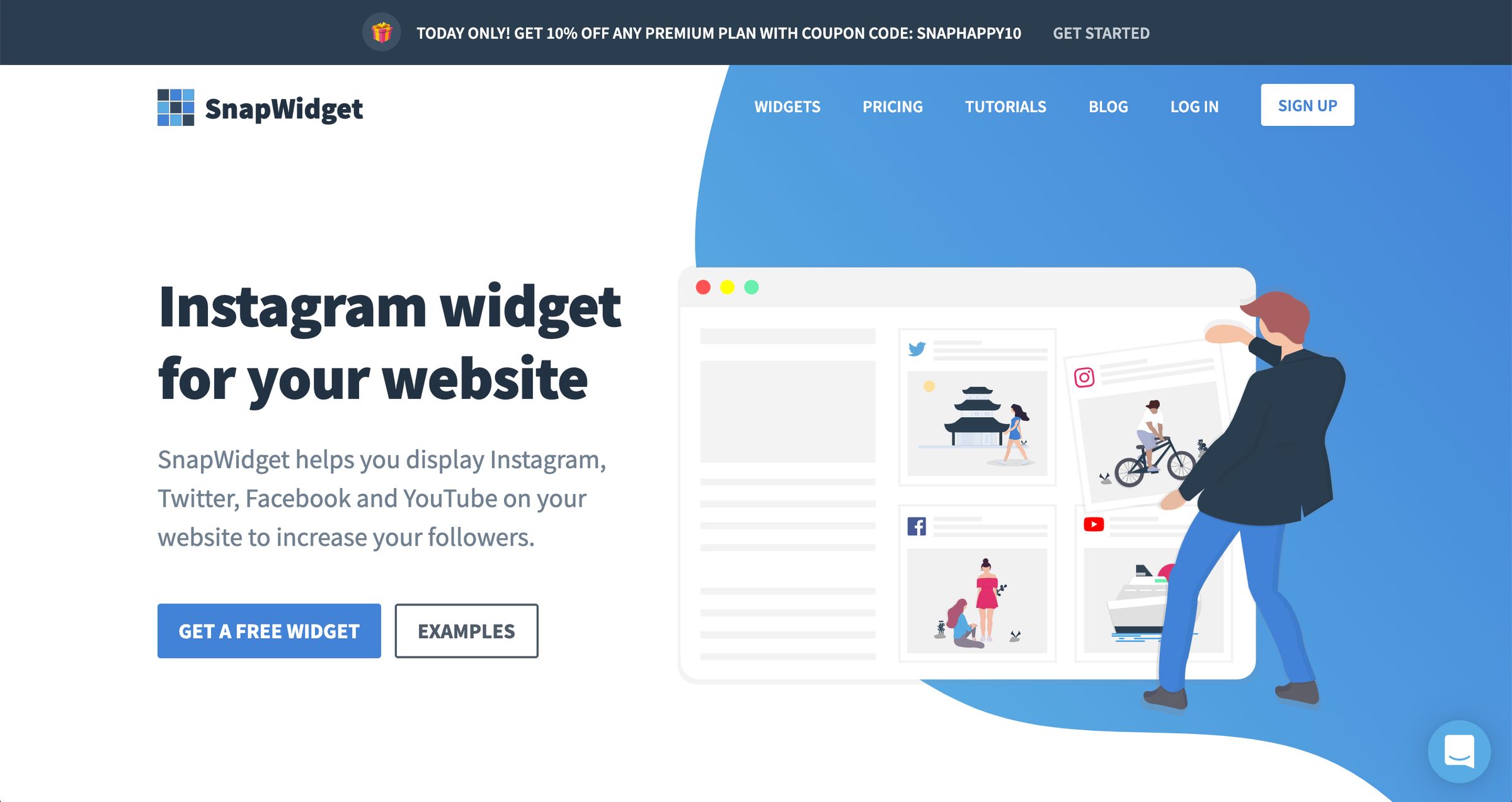
Pros:
- Automated updates: Your feed updates automatically with your latest Instagram posts.
- Customizable: You can customize the appearance and layout of the feed.
- User interaction: Users can view and interact with the feed directly on your site.
Cons:
- Premium features often come with a subscription fee.
- You rely on the widget service for feed updates and functionality.
- Depending on the service, there might be a slight impact on your site’s loading speed.
Conclusion
Embedding your Instagram feed on your Shopify website enhances engagement and showcases your brand’s social presence. Each method has its pros and cons. Instagram’s embed code is straightforward but limited. Shopify apps offer automation and customization but at a cost. Canva and Canvify provide full design control but require manual updates. HTML widgets offer a balance of automation and customization but also come with costs and potential performance impacts. Choose the method that best fits your needs and helps you maintain a dynamic and engaging website.




